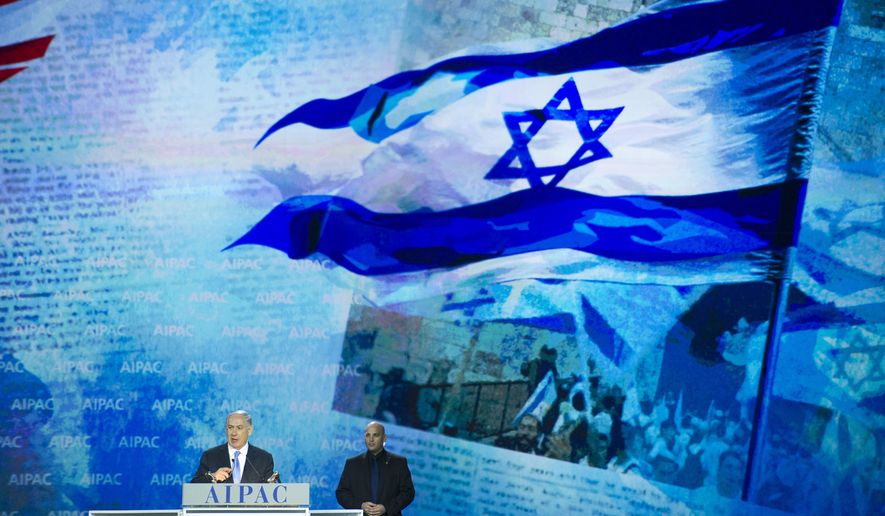The United States is fast closing in on a nuclear deal with the Islamic Republic of Iran. The signs are multiplying.
There is Secretary of State John F. Kerry, trying to deflect last-minute congressional intervention, stubbornly claiming that the details of an agreement are so undecided that he can’t discuss them. Meanwhile, other administration sources are outlining the draft agreement in considerable detail: up to 6,500 centrifuges permitted; limits on fissile material such that, at least in theory, Iran would need a year to sprint to a bomb; a deal of 10 years’ duration with perhaps an additional five-year ramping-down of restrictions on Iran.
No mention of Iran’s ballistic missile program which, absent weapons of mass destruction, makes little sense. No mention either of coming clean on Teheran’s past nuclear activities, including its warhead weaponization program.
Israeli Prime Minister Benjamin Netanyahu, seeing the handwriting on the wall as clearly as Babylonian King Belshazzar in the Book of Daniel, has hurried to Washington to make an eleventh-hour appeal to Congress. (Belshazzar was killed and his capital sacked by the Persians the very night of Daniel’s prophecy.)
Mr. Netanyahu’s haste is understandable. The draft agreement represents what has fairly been described as massive and irreversible concessions to Iran. After all, the starting point for all of this was a series of U.N. Security Council Resolutions that directed Teheran to suspend all enrichment activities.
Of course, the United States and its negotiating partners conceded Iran’s right to enrich at the beginning of this process, opting, as Henry Kissinger has described it, to manage rather than prevent nuclear proliferation. Now this agreement will legitimate Iran as a nuclear state and — with the rolling 12-month weaponization shot clock — as a permanent nuclear weapon threshold state as well. Whatever constraints the deal finally sets will have defined time limits. The agreement’s impact on future counterproliferation efforts also will be profound as a struggling, isolated regional power has just challenged the world and clearly won.
There’s a lot not to like here, and it will be pretty easy to shoot holes in the agreement. Congress should certainly be offered the chance. Codifying a deal of this magnitude on executive prerogative alone would be unconscionable.
Beyond the specifics, the administration’s macro views are also fair game for inquiry. Was the Iranian deal so important, intrinsically or as part of the president’s legacy, that he pulled punches in Syria against Teheran’s client Bashar Assad or in Ukraine against Vladimir Putin, an essential negotiating partner vis-a-vis Teheran.
And what of the talk of an overall American-Iranian rapprochement once the nuclear issue is behind us? The president himself has spoken of a better-behaving Iran as a “very successful regional power” and of an “equilibrium ” between Teheran and the Sunni states of the region. The New York Times’ David Brooks even suggests that the president’s big plan is that “Iran would re-emerge as America’s natural partner in the region.”
So there will be lots to talk about and to challenge and criticize. It won’t be hard to find weaknesses in the nuclear deal or in the worldview that nurtured it. I will certainly be among those citing such flaws. Watch this space, for example, for commentary on the need for an invasive inspection regime since American intelligence on its own cannot give adequate assurances that the Iranians are not cheating. With international inspectors still barred from checking on past weapons activity at Parchin, I will be skeptical.
I will be skeptical too that, after an agreement is reached, Iran won’t be the duplicitous, autocratic, terrorist-backing, Hezbollah-supporting, Hamas-funding, region-destabilizing, hegemony-seeking theocracy that it is today.
But people like me also need to be prepared to answer another question: If not this agreement, then what? “What if,” as a Jack Nicholson character once put it, “this is as good as it gets?”
Some smart friends of mine — former Supreme Allied Commander in Europe Jim Stavridis, former Secretary of the Navy Sean O’Keefe and former Secretary of Defense Bill Perry — said as much in Politico last week, in support of an agreement.
If you reject this, then what are the options?
Some observers call for toughening and tightening sanctions to drive a better deal, but today’s sanctions regime has been successful largely because it has been so multilateral. I fear that, having come this far, having already made so many apparent concessions, an American rejection now would shatter consensus and leave economic pressure on Iran in shambles.
There is always the threat of what we euphemistically called “the kinetic option” in the Bush administration. President Obama has consistently said that all options are on the table and once famously bragged that “I don’t bluff.” But we know that he does and — post red line, post chemical weapons and post Syria — so do the Iranians. Realistically, there will be no American physical coercion of Iran at least until 2017.
Israeli action is equally unlikely. The air force is too small and the targets too distant, too numerous, too hardened. What Israeli prime minister — even a tough, recently re-elected one — would chance the only strategic relationship on which the survival of the Jewish state depends to set back the Iranians a few months?
Besides, the judgment we had in the Bush administration still holds. Any kinetic option, even a robust American air campaign, will guarantee that which we are trying to prevent: an Iran that will stop at nothing to, in secret, develop a nuclear weapon.
There was a reason we thought this was the problem from hell while I was in government. It still is. Stay tuned.
• Gen. Michael V. Hayden is a former director of the CIA and the National Security Agency. He can be reached at mhayden@washingtontimes.com.
• Mike Hayden can be reached at mhayden@example.com.




Please read our comment policy before commenting.